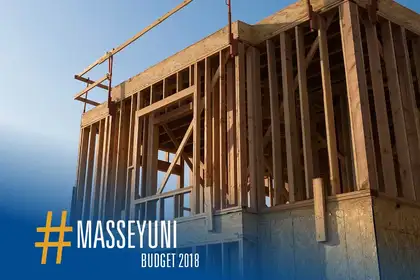
Half of KiwiBuild houses will be built in Auckland, along with a $6b investment in transport. This will take a lot of labour, which in turn will put pressure on existing infrastructure.
By Distinguished Professor Paul Spoonley.
One of the tricks of the Budget will be how to balance immigration with the ambitious infrastructural build the Government has signaled.
Currently, the construction industry employs 245,000 and with growth in recent years, an additional 15,000 were added in 2017 alone. But with a declared goal of building 100,000 new and affordable houses ($2 billion), the investment in Auckland’s infrastructure ($6 billion) and regional growth, a major question concerns labour supply.
A quick look at New Zealand Now, the Immigration NZ website, or LookSeeBuild (a group of companies who are looking to recruit construction and engineering professionals, indicates the skills that are in short supply. New Zeaand Now anticipates that the number of construction workers will need to increase by 25 per cent, while LookSeeBuild has 15,000 offshore candidates for the 30 companies that make up the talent recruitment company.
These ambitions to help redress these infrastructural builds will require a large and skilled workforce. The question is how?
Some of this labour supply can be met by ramping up the apprenticeship and trade training schemes – but this will take time and even if these schemes are scaled up significantly, there will still be a shortfall.
The question of labour supply is not confined to construction. In IT, the number of graduating students from universities and polytechnics is slightly less than annual demand, and so about 5000 immigrants are recruited. This still leaves a shortfall of a round 3000.
In the horticulture and viticulture sector, the annual needs to harvest and process crops is a struggle as there are simply not enough workers available. There were significant shortages this year to pick kiwifruit in the Bay of Plenty or apples in Hawke’s Bay.
The recognised Seasonal Employment Scheme has been very successful and a quick – and anticipated win – would be to announce an increase in the numbers for the 2018-2019 harvesting season. But it still the leaves the Government with a number of challenges.

Distinguished Professor Paul Spoonley.
Balancing labour needs and immigration pressures
The first is how to locate and recruit the skilled workers required for the construction industry. The Government will regionalise immigration by introducing a regional skill shortages component and working with local employers, industries and organisations to develop a better indication of regional demand. Immigrants will then be encouraged to meet these local demands.
But half of the KiwiBuild target will be built in Auckland – 50,000 houses. The $6 billion investment in Auckland in areas like transport infrastructure is still going to require a lot of workers to make this happen – which in turn will add to the current growth for products and services, including housing. And it will not do much to slow Auckland’s population growth. A significant component of this labour and skill supply must come from immigrant workers however you cut the numbers.
So what will the Government do about immigration? It will offer a mix of incentives and regulation.
In the latter, the Minister has already clearly signaled that he wants greater scrutiny and action against employers who are exploiting migrant labour. Many of the cases reported to MBIE have not been investigated and very few prosecuted.
The Government will also move to manage the numbers of international students on low value courses. Depending on how you count the numbers, it is estimated that up to one-third of international students currently studying in New Zealand fall into this category.
Tighter scrutiny and action has already reduced the number of students arriving from India. More is to come. These cuts – and there will be cuts – are estimated to result in a drop of about $260 million in annual income out of an industry that is worth $4.2 billion in total.
Immigration will be regionalised. There will be a move to identify regional demand and use a regional skill shortages list to signal areas where immigrants might be encouraged to go. The “encouraged” bit is going to be interesting. The last Government increased the points granted from 10 to 30 for those indicating they were going to regions other than Auckland. But this is a light touch approach that needs some teeth, both in terms of directing immigrants to regions and then what they must do when they are there (for example, stay for five years?) to meet their visa requirements.
And this might be accompanied by a tougher labour market test – are New Zealand employers making the jobs attractive enough for local labour before considering off-shore options?
As the investment in infrastructure, especially in Auckland, ramps up alongside ongoing labour and skill shortages in a range of other industries, a major challenge for the Government is “where will the workers come from?” And whether they like it or not, immigration will have to be part of that mix.
Distinguished Professor Paul Spoonley is the Pro Vice Chancellor of Massey Universities College of Humanities and Social Sciences.